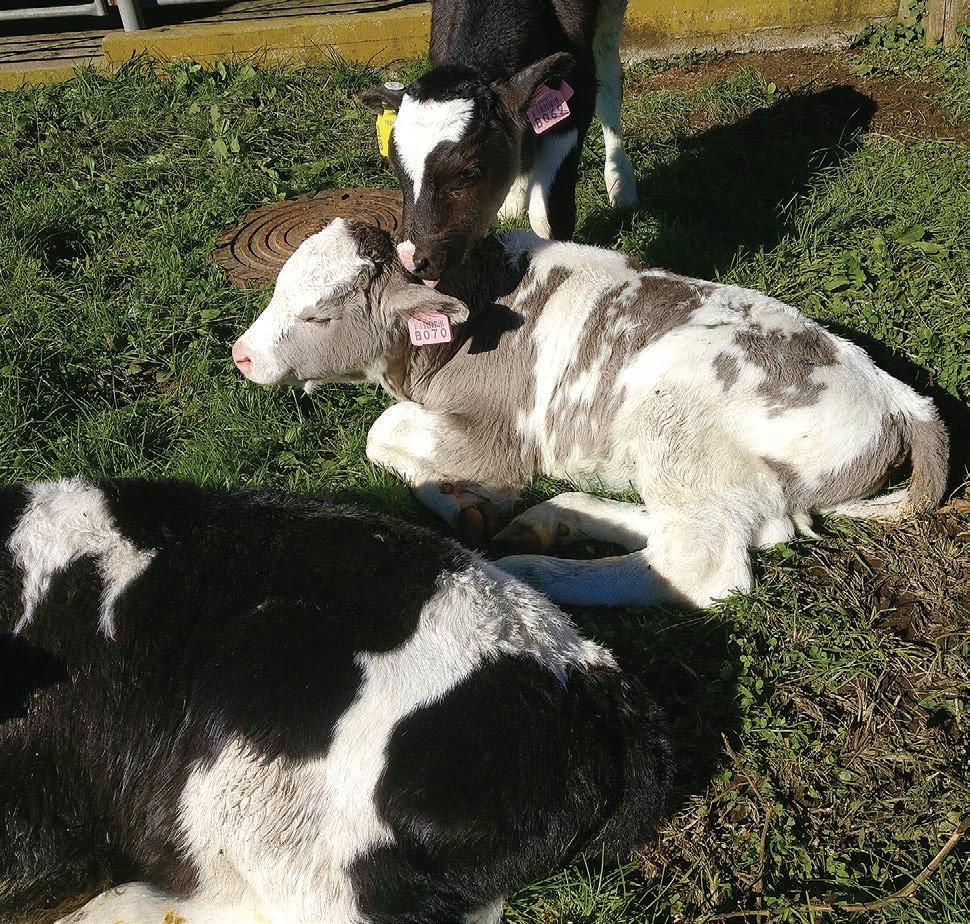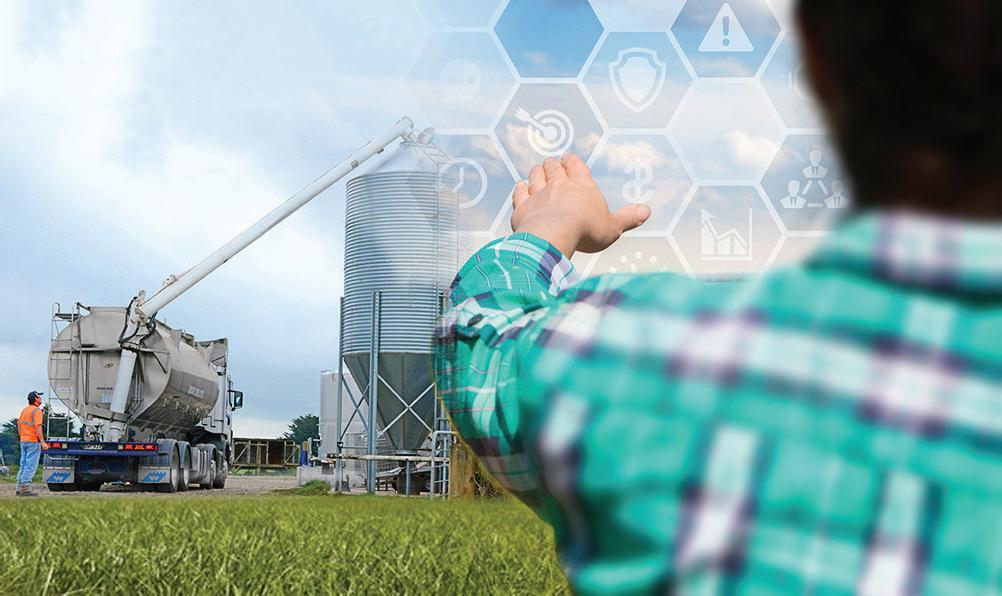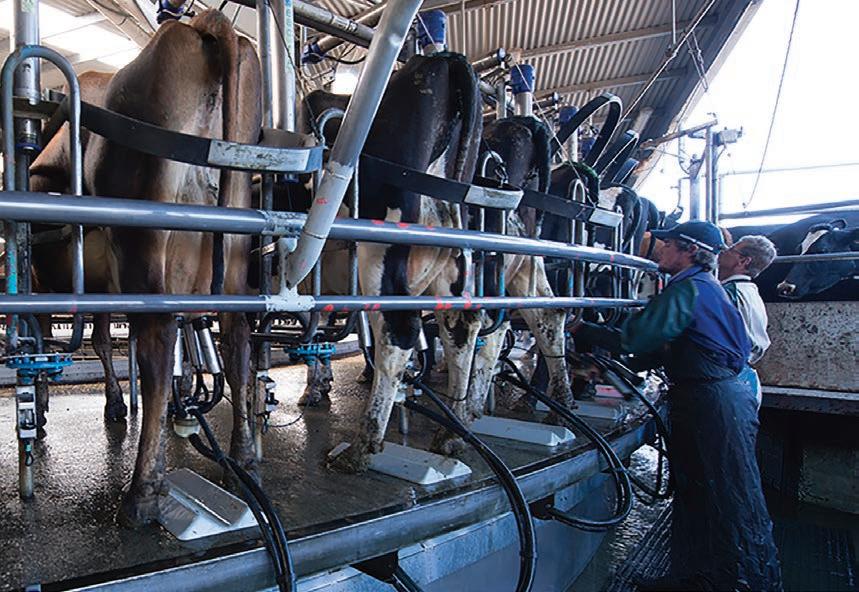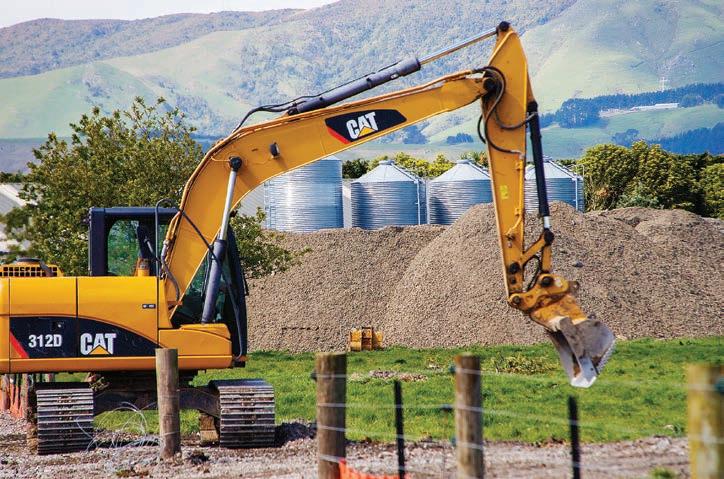
7 minute read
Research
from Dairy Farmer November 2020
by AgriHQ
Gene editing for climate change
By Gerard Hutching
Scientists are using gene editing to create cattle that can handle climate change.
New Zealand scientists have successfully used CRISPR gene editing to create cows with grey patches rather than black, which means they will be better able to cope with heat.
The work has been carried out by scientists at AgResearch’s animal containment facility at the Ruakura campus in Waikato. The Crown Research
Institute has been granted approvals for the research, according to conditions set by the Environment Protection Authority (EPA).
AgResearch senior scientist Dr Goetz
Laible says two Holstein Friesian calves with the gene edit were born live but one died at birth, while the second died at four weeks of age from a navel infection.
Both deaths were thought to be linked to the fact they were cloned, rather than from the editing process.
Now, the team is working on an alternative way of breeding more calves with the edit, which will avoid the use of the cloning process.
The technology could come into its own in a warming climate. A 2007 study showed New Zealand dairy cows This calf’s grey patches are a result of CRISPR genome editing. become heat stressed for nearly 20% of the time they are being milked, halving yields. impact of just lightening the coat colour approach could work, the effect could be
In 2016, NZ experienced its hottest year on heat stress and milk production, small for cows with access to shade. on record, while last year recorded the which is the ultimate goal of this study,” The AgResearch team managed fourth warmest year. Warmer summers Laible says. to create the grey coat by making a are predicted to increase in number and Heat also makes it difficult for cows to small change in a gene involved in intensity. become pregnant, so the gene editing pigmentation called PMEL. The change
Laible says a black coat was just one technique may help dairy cows to have to the PMEL gene was made in fetal skin variable related to heat stress. Others the calf every year they need to maintain cells from a male Holstein Friesian that included ambient temperature, relative milk production. were growing in a dish. humidity, wind speed, solar radiation and Peter Hansen at the University of Laible says they could have used the animal’s genetics and production Florida told New Scientist magazine standard breeding techniques and levels. that studies he and his colleagues made crossed beef cattle with dairy cattle, but
“Heat stress is a complex phenomenon had shown that predominantly white the result would have been livestock that with higher absorption by a black coat cattle regulate body temperature better were less than ideal for producing either colour being only one aspect. Generation and maintain milk yield better than milk or meat. of the edited cattle would for the first predominantly black cattle. “After seven days in vitro culture time make it possible to determine the He cautions that while AgResearch’s single embryos were non-surgically

transferred to synchronized recipient cows for development to term,” the study was reported on the scientific platform bioRxiv.
Once the two calves were born, the team confirmed that what should have been black markings had changed to silvery grey, while white areas remained unaffected.
Laible says AgResearch was now working on introducing changes known from tropical cattle that have been associated with heat tolerance. Other cattle breeds, which may benefit from gene editing technology could be Black Angus. AgResearch senior scientist Dr Goetz Laible and his team have been working on research into gene editing cattle to help them survive climate change.
Gene editing has already been used to produce a non-horned animal by Minnesota company Recombinetics. It is standard practice to dehorn cattle, which is criticised by animal welfare advocates. Another potential area where it could be used is in producing livestock which emit little or no methane, one of the leading contributors to global greenhouse gases (GHG).
CRISPR technology allows scientists to edit genes by altering a piece of DNA inside a cell but as it is a form of genetic engineering, it is outlawed other than for approved experiments in contained centres. n
Working smarter. So your feed works harder.


Specialists in customisable feed Silo | Bulk | Liquid

New research facility for Massey farm
Work has begun on a new joint dairy research facility between Massey University and AgResearch on Dairy 4 farm near Palmerston North. Photos: David Wiltshire
AMassey University dairy farm will host new joint research facilities that will focus on improvements across a range of critical issues, from animal welfare to climate change and environmental impacts.
Work has just begun on the development of the new joint research facility between Massey University and AgResearch on Dairy 4 farm, the larger of two dairy farms owned by the university near the Manawatu campus.
Dairy 4 farm is a 220-hectare commercial, research and teaching farm with approximately 600 spring calving cows.
The new facilities will boast two rotary milking platforms, which will allow detailed research projects to take place alongside the farm’s daily operations. Other new facilities include a covered veterinary area for individual cow measurements and a multi-lane feed pad to enable differential feeding to various groups of cows. There will also be an effluent treatment system, a data centre within the shed to store and manage research data, a teaching room and biosecurity station.
Professor Peter Kemp of the School of Agriculture and Environment says the new facilities will help Massey to build on its reputation of contributing world leading pure and applied research, in partnership with industry, on matters that are of national and international interest including environmental impacts of climate change, biosecurity issues, animal welfare issues and economic

The existing 300-head barn on Massey Dairy 4 was constructed in 2012 and has been used for research on partial housing systems for dairy cows. threats posed by innovations in food production.
He says the partnership will enable greater interaction between Massey and AgResearch staff and students and allow a range of independent trials to operate at any one time.
“These high-quality and fit-for-purpose facilities will improve the flexibility in our programme delivery and content, while also helping to attract new researchers, staff and students,” Kemp says.
He says the new facilities will also attract new research partners and deepen existing relationships with industry and communities, nationally and internationally.
AgResearch Research director Dr Trevor Stuthridge says investing with the university in the development of Dairy 4 farm was identified some years ago as part of the strategic development of science capability at AgResearch’s Grasslands campus.
“The farm’s proximity to Te Ohu Rangahau Kai, a worldclass joint food science facility
based at the university and connections with FoodHQ, will increase the linkages of research programmes across the whole supply chain from producer to consumer,” Stuthridge says.
“New Zealand communities and farmers will benefit from this significant investment into the future of farm-scale science research. It underpins the close relationship and collaboration between AgResearch and Massey, two significant land-based science institutions.”
The new facilities will be developed on a greenfield site, so construction will not impact the farm’s operations and existing research activities underway. Completion is scheduled for winter 2021.
Dairy 4 farm is well known for its research into nutrient losses on heavy soils and recent collaborative work on partial housing systems for dairy cows. It hosts a large number of visitors each year and is used often by Massey’s agricultural and veterinary students. n
Collaborative partners
Massey University Dairy 4 farm has been operating for about 46 years and complements Dairy 1 farm, a 260-cow farm beside the Manawatu River that can be seen from the Fitzherbert Bridge.
AgResearch has a range of research farms across New Zealand and has also partnered with DairyNZ and southern dairy farmers in the new Southern Dairy Hub, a large-scale research dairy farm in Southland.
Te Ohu Rangahau Kai is the combination of the complementary sets of expertise from AgResearch, the Riddet Institute and Massey University, combining the Riddet Institute’s strengths in high-quality food science and future capability, with AgResearch’s strengths in technology and innovation to support NZ’s exports.
Te Ohu Rangahau Kai ensures increased collaboration between scientists, working in a facility that features high-quality workspaces, laboratories, teaching spaces and state of the art equipment to tackle some of the biggest issues of our age, including a secure and safe food supply, whilst also increasing our support for the wellbeing of all New Zealanders.


Equipment and materials for the foundations of the new barn are on site at Massey Dairy 4.











